This article was co-authored by wikiHow staff writer, Hunter Rising. Hunter Rising is a wikiHow Staff Writer based in Los Angeles. He has more than three years of experience writing for and working with wikiHow. Hunter holds a BFA in Entertainment Design from the University of Wisconsin - Stout and a Minor in English Writing.
There are 11 references cited in this article, which can be found at the bottom of the page.
This article has been viewed 21,446 times.
Learn more...
Plastic straws take a long time to break down naturally, so replacing them with eco-friendly, reusable alternatives can help keep dangerous pollutants out of the environment. While you can always buy bamboo straws online or from home good stores, you can also try making your own from any healthy bamboo shoots. Bamboo straws still break down over time, but as long as you take care of them properly, you can use them for up to a year before putting them in a recycling or compost bin.
Steps
Cutting the Bamboo
-
1Choose healthy bamboo stalks that are as thin as a pencil. Look for shoots that are as thin or thinner than a pencil so you can comfortably drink through them. Opt for bamboo stalks that have at least 6–10 inches (15–25 cm) between nodes, which are the horizontal bands on the stalks.[1]
- Avoid using stalks that are thicker than 3⁄4–1 inch (1.9–2.5 cm) since you may have difficulty using the straw.
- Look out for spotted or rotted bamboo since it could weaken your straw or have harmful bacteria.
- It’s okay if the bamboo stalks have slight bends or angles as long as they’re mostly straight.
-
2Clip the bamboo stalks with pruners at a 45-degree angle. Position your cut just above one of the bamboo nodes so it’s able to regrow easily after you cut it. Position the pruners so the blades make a 45-degree angle on the stalk and squeeze the handles tightly together. Leave at least 1–2 nodes on the bamboo so they can continue growing.[2]
- Avoid making straight cuts since it can trap water and make the bamboo develop rot.
- You can also saw the bamboo stalks at a 45-degree angle with a hacksaw if you don’t have pruners available.
Advertisement -
3Leave the bamboo vertically in a dry area until it turns tan. Set the bottom end on a cinder block or brick so it’s off the ground to avoid water damage. Lean the bamboo vertically against a wall or rack to help guide any liquid inside down and out of the stalk. Let the bamboo completely dry out until it has a tan color, which usually takes around 2–3 weeks.[3]
- Avoid laying the bamboo horizontally since it may not drain properly and could develop rot.
- If you plan on drying the bamboo outside, try to use a south-facing wall to ensure it receives sunlight throughout the entire day.
-
4Saw the bamboo into 6–10 in (15–25 cm) segments between the nodes. Set the bamboo stalk on your work surface so it overhangs the edge by about 6–10 inches (15–25 cm). Hold the stalk firmly against your work surface with your non-dominant hand and make a straight cut 1⁄2 inch (1.3 cm) over from the node using a hacksaw. Then remove the node on the other side of the straw, leaving a 1⁄2 in (1.3 cm) gap. Continue cutting straws from the entire length of the stalk.[4]
- Usually, a 4 ft (1.2 m) section of bamboo will make between 4–16 straws depending on their lengths.
- Avoid making straws shorter than 6 inches (15 cm) since they may not be tall enough for most cups.
- Don’t use pruners to cut dry bamboo since you could cause the stalks to crack or splinter easier.
Tip: Make a few straws shorter and some longer so they can fit better in odd-sized glasses.
Sanding and Cleaning the Straws
-
1Sand the ends of the straw with sandpaper to remove sharp edges. Place a piece of fine-grit sandpaper, such as 180- or 220-grit, over one of the straw’s cut ends. Apply firm pressure and spin the sandpaper around the straw to taper the end. If you still have trouble smoothing the edge, hold the sandpaper face-up against your work surface and rub the end of the straw against it until it feels smooth. Repeat the process on the other end of the straw.[5]
- Avoid using the straw without sanding it first since you could easily cut your mouth or get splinters.
- Blow the sawdust off of the straw occasionally so you can see what you’re working on.
-
2Smooth the outside of the straw with sandpaper or a belt sander. Wrap a piece of 180-grit sandpaper around the outside of the straw and rub it up and down the bamboo’s length. Rotate the straw as you work to smooth it out evenly. If you’re using a belt sander, wear safety glasses to protect yourself from kickback. Hold the ends of the straw and lightly press the side of the straw against the moving belt on the sander. Move the straw back and forth so you sand the exterior evenly, rotating the straw as you work your way around the bamboo.[6]
- It’s okay to leave bumps or angled sections on the length of the straw if you want.
- Don’t apply too much pressure while sanding, or else you could crack the bamboo.
Warning: Never touch a belt sander while it’s moving since you could seriously hurt yourself.
-
3Run sandpaper through the middle of the straw. Cut a strip of 180- or 220-grit sandpaper that’s about 1 inch (2.5 cm) wide and 2–3 inches (5.1–7.6 cm) long. Roll the piece of sandpaper lengthwise to form it into a long coil. Feed the end of the coil into the middle of the straw and push it through the length of the straw. Pull the sandpaper out from the other side. Repeat the process 3–4 times to smooth the inside edges.[7]
- Push the sandpaper with a thin stick or wire if you have trouble pulling it through the bamboo.
-
4Clean out the inside of the straw with a pipe-cleaning brush. Push the thin end of the pipe-cleaning brush into the middle of the straw. Rotate the brush clockwise 1–2 rotations before pulling the brush out. Continue dusting out the straw from both sides s5–6 times, or until you don’t see visible dust when you remove the brush.[8]
- Pipe-cleaning brushes usually have stiff bristles in a cylindrical or conical shape to help clean the sides of pipes, and you can buy them from your local hardware store.
- You may also try aiming compressed air inside the straw and blowing the dust out in 1- to 2-second bursts into each side until you don’t see any more come out.
Treating and Using the Straw
-
1Boil the straw in saltwater for 10 minutes before using it. Bring 1 US quart (0.95 L) of water mixed with 2 teaspoons (12 g) of table salt to a boil on your stove before putting the straws inside. Put the lid on the pot and allow the straws to boil for 10 minutes to kill any bacteria. Remove the straws from the water with a pair of tongs and set them on a towel in a well-ventilated area to cool down and dry, which will take about 30 minutes.[9]
- Make sure you use a pot that’s large enough to fully submerge the straws, or else they won’t be disinfected properly.
- You can use the straw as soon as it cools down.
-
2Wash and dry the straw by hand right after you’re finished using it. Use the straw as you normally would with any type of drink. When you finish the drink, give the straw a quick rinse with clean water. When you have time for a more thorough clean, rinse the straw with soapy water. Set the straw in a well-ventilated area so it can dry.[10]
- Avoid leaving any sticky or sugary drinks dry inside of the straw since they could weaken the wood or cause buildup inside.
- If you have buildup inside the straw, try to scrape it out with a pipe-cleaning brush.
- Keep the straws in a dry place that’s room temperature, such as a cabinet drawer.
Tip: You may put bamboo straws in the dishwasher, but take them out before the drying cycle since you could cause the bamboo to crack from the heat.
-
3Recycle or compost the straw if the ends begin splintering. Check the ends of the straw whenever you’re about to use it to make sure the ends aren’t cracking. If you notice the straw breaking, put it in your recycling or compost bin instead of your regular trash. Usually, your bamboo straw will last about 1 year as long as you take good care of it.[11]
- Make multiple straws at a time so you have a replacement ready when you’re finished using another one.
Warnings
- Wear safety glasses when using a belt sander in case the bamboo breaks while you’re working.⧼thumbs_response⧽
- Always check the ends of the straw before using them to avoid injuring yourself since they could split or splinter.⧼thumbs_response⧽
- Never touch a moving belt sander since you could seriously hurt yourself.⧼thumbs_response⧽
Things You’ll Need
- Hand pruners
- Hacksaw
- Safety glasses
- 180-grit sandpaper
- Belt sander
- Pipe cleaning brush
- Pot
- Stove
- Table salt
- Dish soap
References
- ↑ https://youtu.be/sejKUfTkLnk?t=20
- ↑ https://youtu.be/k9kfIpj0EkI?t=11
- ↑ https://youtu.be/sejKUfTkLnk?t=35
- ↑ https://youtu.be/k9kfIpj0EkI?t=17
- ↑ https://youtu.be/5YZpdbYTfd0?t=89
- ↑ https://youtu.be/g6RxNau7BrY?t=91
- ↑ https://youtu.be/g6RxNau7BrY?t=181
- ↑ https://youtu.be/k9kfIpj0EkI?t=55
- ↑ https://youtu.be/g6RxNau7BrY?t=236
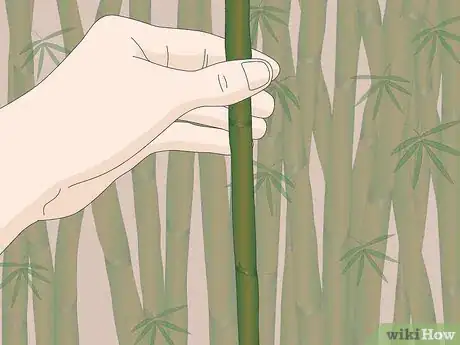
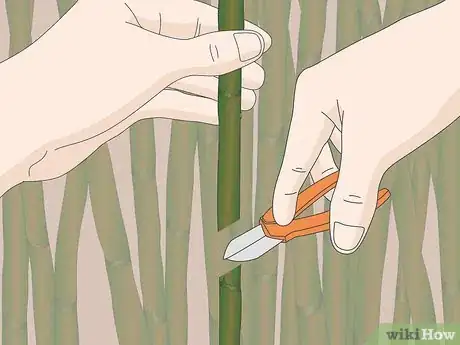
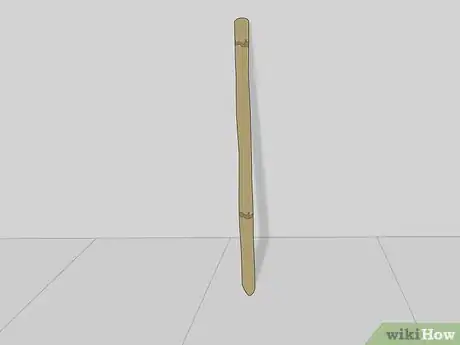
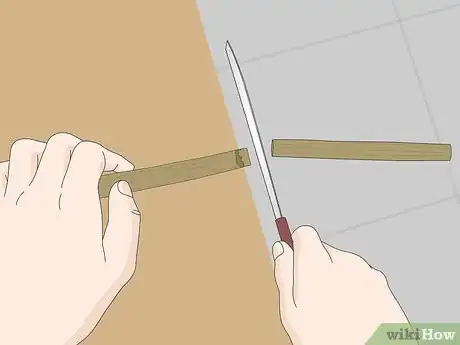
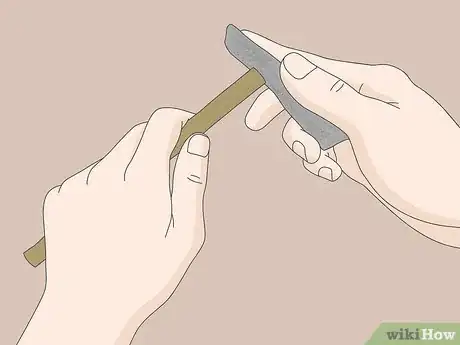
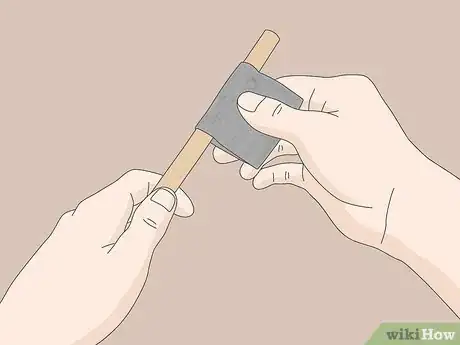
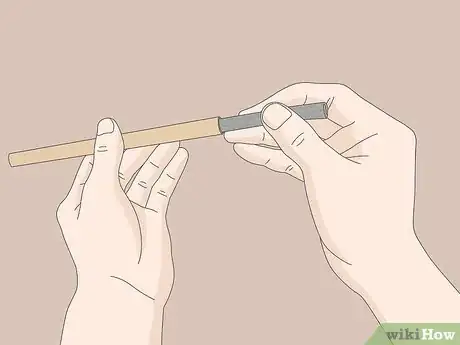
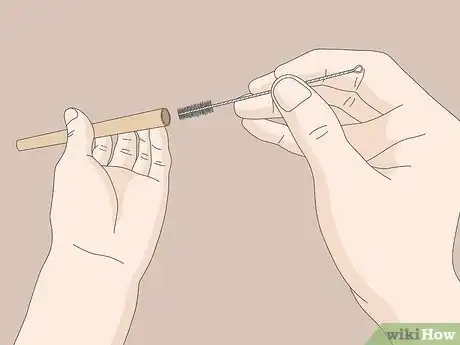
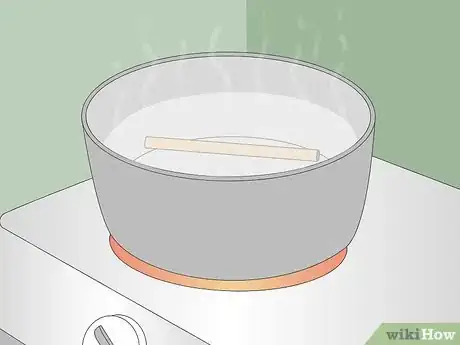
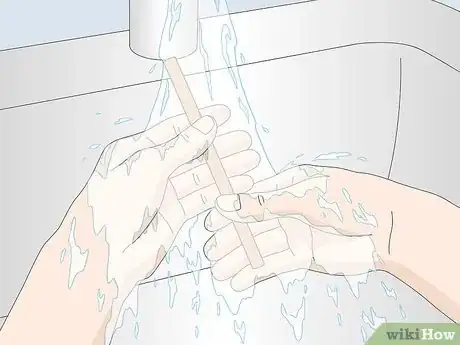
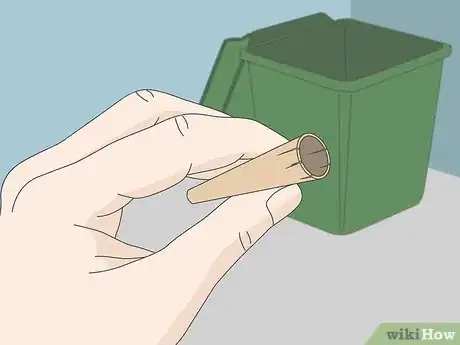
-Step-11.webp)


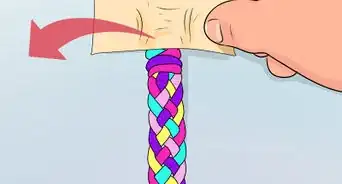
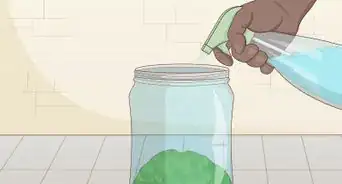









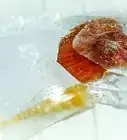
-Step-11.webp)




































